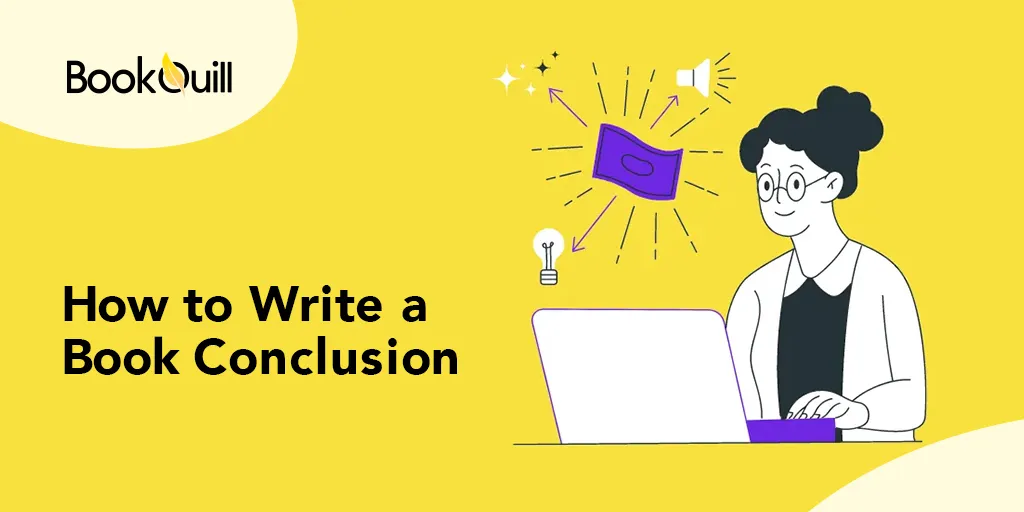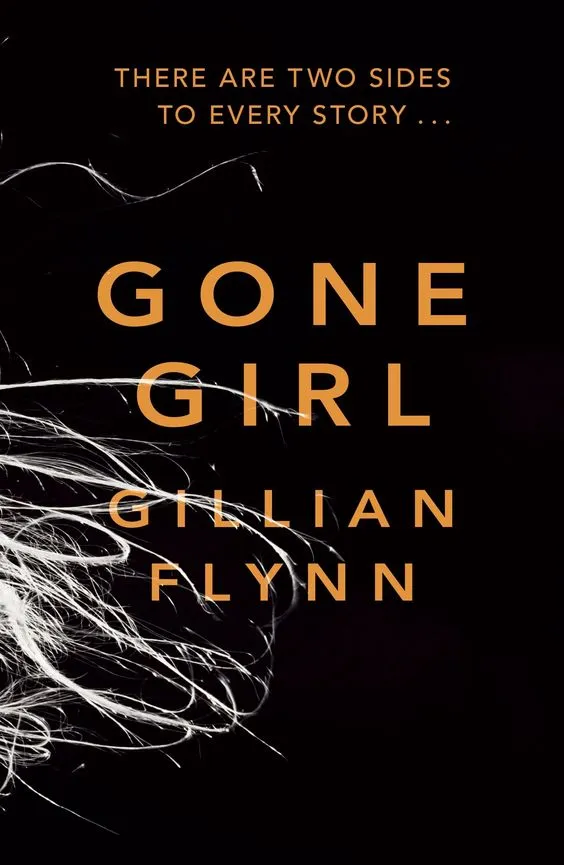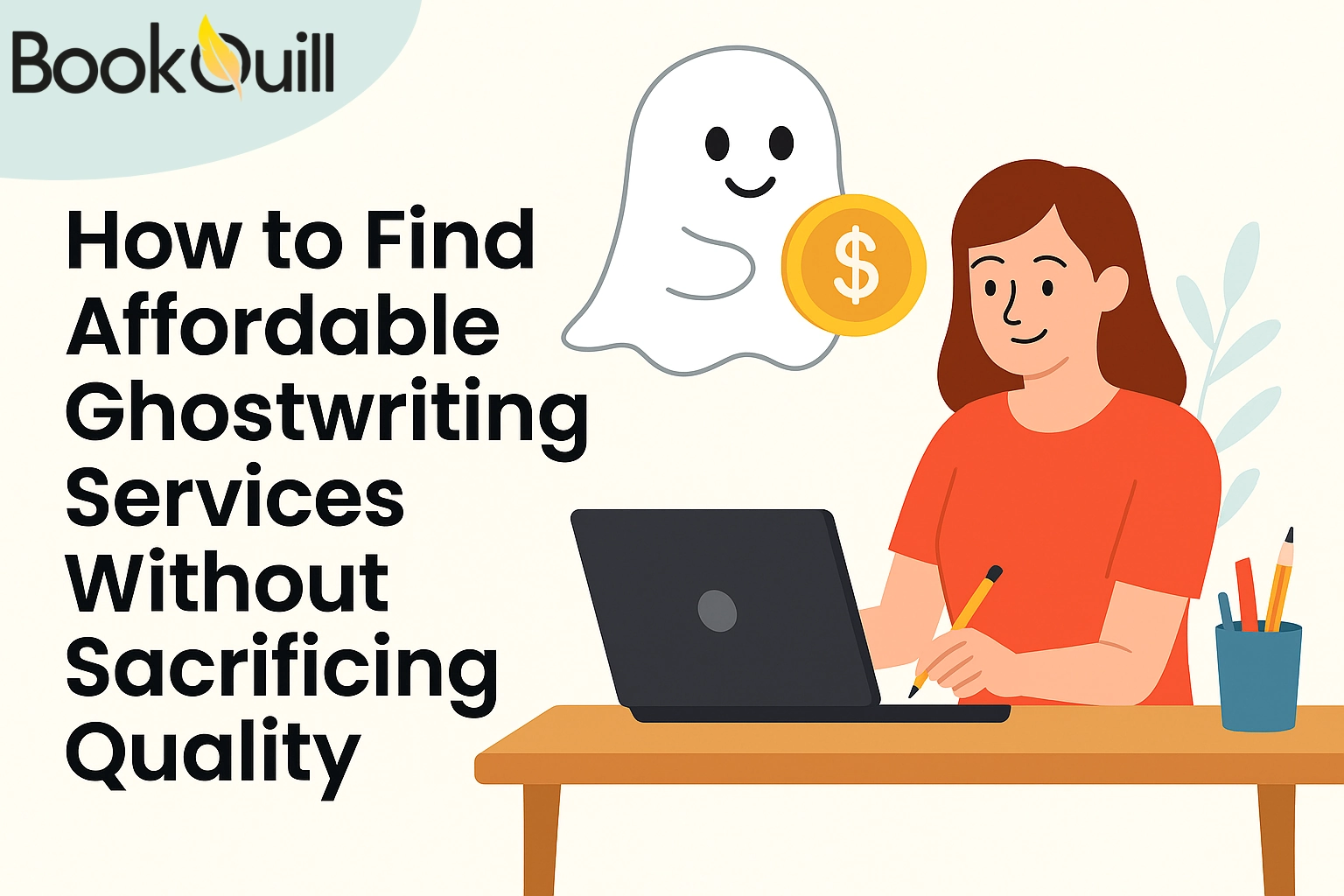Table of Contents
Explore Blogs
Trending on Ebook
How to Write a Book Conclusion

The ending of a book is as important as the beginning. It is your chance to leave the reader with something worth remembering and recommending. After all, you do not want to just write another book, you want to write a book that is remembered by your readers for years to come.
“The end of a story must be stronger rather than weaker than the beginning since it is the end which contains the denouement or culmination.” – Mary Roberts Rinehart
So are you riddled with questions like, “how to end a novel?” or “What sets apart a good book conclusion from a bad one?”? We answer all these questions and more in this guide. So let’s jump right into it!
What Is the Conclusion of a Story?
Before delving into how to conclude a story, let’s first understand what a story conclusion is. The conclusion of a story is where loose ends are tied up, conflicts are resolved, and the narrative reaches its resolution. It’s important to note that people confuse the climax and the conclusion in a story, but they are not the same thing.
The conclusion happens after the climax and it wraps up the story by providing resolution to the central conflict. The climax, on the other hand, is the peak moment of tension or conflict in a story. The conclusion resolves this tension and offers the final outcome of the story’s events.
How to End a Book: Do’s and Don’ts
The Do’s
There are different approaches to concluding a book (discussed later) but broadly book endings across the board are expected to do the same thing. Here is a breakdown of what a book conclusion should aim to achieve:
- Summarize the Book’s Content: A book conclusion should offer a summary of the main ideas, events, and themes discussed throughout the book. This may not apply to every book genre but is particularly true for non-fiction. A recap of the book’s content allows readers to revisit the key ideas and elements of the book.
- Tie Up All Loose Ends: The one thing your readers are most looking forward to is getting answers to their questions and clarity of ambiguous plot points. The conclusion is where you want to tie up any loose ends and answer all the lingering questions.
- Include a Call to Action: An effective book conclusion does more than conclude a story or summarize the book’s content. It inspires or encourages the readers to take action based on the lessons learned. This can be done by including a thoughtful and well-written call to action in the conclusion.
- Point to Additional Resources: In some cases (mostly non-fiction writing), a book conclusion can extend its value by pointing readers to additional resources. This could include further reading suggestions, related articles, or other works on the topic.
The Don’ts
Realizing what to avoid is just as important as understanding what a conclusion should do. Here are some things a book conclusion should not do:
- Introduce New Ideas: A book conclusion should not introduce any new ideas or plotlines. Any new characters, plotlines, or fresh story arcs should be introduced earlier in the book. A book ending is only meant to wrap up existing ideas, it is not the place for new ideas. Introducing new elements at the conclusion can confuse readers and disrupt the narrative flow.
- Be Too Long: If the reader has made it to the end of the book it means they enjoyed it. There is no need to extend the conclusion or drag it because that can be off-putting for the reader. The conclusion should be concise and focused. An excessively drawn out conclusion can dilute the impact of the story.
- Stray from the Book’s Idea: Your conclusion should follow the style and tone of the book. It is not a good idea to steer away from the main theme or concept of the book. If your book’s overall message has been to teach or raise awareness, ending it with a conclusion that sounds like a sales pitch for an external product would look bad. For the coherence of the narrative, stick to the central idea of the book.
How to End a Novel: Popular Book Conclusion Examples
Those who are new to reading typically think there are only two types of book endings – happy and sad. However, only after reading extensively one realizes, there are many kinds of story conclusions. Here are some of the most common book endings:
Resolved Endings
The resolved ending is arguably the most well-liked book ending type. This type of conclusion neatly ties up all story arcs and offers a clear and satisfying end to all the conflicts. A resolved ending leaves no major questions unanswered and offers a sense of closure to the readers.

A classic example of a resolved ending is Pride & Prejudice by Jane Austen. The novel ends with the resolution of all misunderstandings and the happy marriage of Elizabeth Bennet and Mr. Darcy.
Open-Ended Endings
Unlike resolved endings, open-ended conclusions intentionally leave certain questions unanswered. The idea is to leave the reader pondering over the potential outcomes and coming up with his interpretation of the ending. It may be happy or sad, depends how you perceive it.

The Road by Cormac McCarthy is a popular example of open-ended endings. The novel concludes on an ambiguous and thought-provoking note with the fate of the main characters uncertain in the post-apocalyptic world.
Unresolved Ending
An unresolved ending raises questions and leaves people wondering where the story is headed. It is usually used by writers for book series where another book will follow the story and offer more answers. An unresolved conclusion builds a sense of mystery and intrigue around the story and leaves space for readers to indulge in discussions about how the story would play out.

Harry Potter and the Half-Blood Prince is an excellent example of an unresolved ending. The book ends with Harry finally learning the secret to bringing down Voldemort. However, the road to finding Horcruxes and defeating Voldemort is a long one.
Twist Endings
Twist endings are meant to take the readers by surprise. They end the story with unforeseen revelations or developments. The best twist endings are the ones readers never saw coming. They often redefine the entire narrative of the story and add a layer of complexity and mystery to the book. They might leave the readers saying, “Whoa, I did not see that coming!”.

Gone Girl by Gillian Flynn is a psychological thriller with a dramatic twist ending. The conclusion of the book came as a surprise for readers and ended up turning around the entire narrative.
Bittersweet Endings
Bittersweet endings combine the elements of happiness and sadness. In books with a bittersweet end, characters may achieve their goals but it will come at a cost. This type of conclusion evokes a range of different feelings and tends to stay with the reader even after the book ends.

The Kite Runner by Khaled Hosseini has a bittersweet end that leaves the readers feeling a whirlwind of emotions. The novel concludes by offering closer and redemption for the protagonist Amir and his relationship with Hassan. However, there is also a lingering sadness and acknowledgment of the scars left by the past.
Tied Endings
With tied or circular endings the author brings the story full circle. Sometimes, the cycle is literal where the story ends where it began, and other times it’s metaphorical. Tied endings offer a sense of completeness and symmetry.
There is a sense of closure when the end mirrors the start of the story in some way. They are an excellent way to show a character’s journey and development.

A great example of a tied or cyclical ending is One Hundred Years of Solitude by Gabriel García Márquez. The novel concludes by connecting the past and present and emphasizing the cyclical nature of time and history.
How to End a Story the Right Way
A well-written conclusion will ensure the story you tell stays with the readers for a long time. Here are some writing tips on how you can end your book the right way.
Review Your Story Arcs
Before you even start writing your conclusion map out and review the major story arcs and character journeys in your book. Make it detailed but organized so you can see the key conflicts of the story and how every character’s arc has been till the last chapter you wrote. This will ensure you leave no loop ends or miss out on addressing any key areas.
Powerful Hook
A book ending, much like the introduction, benefits from a powerful hook. Remember that the conclusion is your last chance to make a good final impression. Include a thought-provoking statement or a question that echoes in your reader’s minds long after they turn the final page.
Revisit the Book’s Main Idea
The conclusion should stay true to the main idea or central theme of the book. Reinforce the key learnings to remind readers of the message that your book aimed to convey. You can bring your book’s narrative full circle this way and add more coherence.
Summarize the Chapter
If you are writing the conclusion to a memoir or some other non-fiction work, take a moment to summarize the chapter. Provide the readers with a quick recap that covers the key developments of the chapter and offers a clear resolution to the reader.
Many readers tend to skip to the last chapter to see if the book is worth their money. A well-written summary might convince them to purchase the book which is why it is important to spend time perfecting the summary.
Call to Action
This point will make more sense for non-fiction books but include a good call to action in your conclusion. Encourage your readers to take an action that allows them to apply the learning of the book. This will ensure that your book stays with the readers beyond the reading experience.
Revise and Seek Feedback
Once you’ve written the conclusion, revise it. Pay attention to the pacing, language, and overall flow. Once you are happy with the result, seek feedback from beta readers or writing groups. This way will be able to gain insight on how you can improve the conclusion.
Final Word
Writing a book conclusion can be tricky. It requires the writer to hit the perfect balance between giving readers closure and leaving a lasting impression. By understanding the should and should-nots of a book conclusion, exploring different types of book endings, and then finally learning how to write a book conclusion, you should be able to perfect your book ending.
Consider your book’s end as a chance to leave a lasting impression on your readers. Write an ending that stays with your readers. One that gets them recommending and coming back to your work.
Frequently asked Questions
How do you write a good conclusion for a story?
A good story conclusion ties everything together and resolves all the conflicts of the story. Whether it’s happy or sad depends on your creative vision. However, it’s important to remember that you can’t please everyone with your book ending. Some readers may disagree with your vision, and that’s okay. As long as it does justice to your story, any ending you write is good.
What is the best conclusion of a book?
The best conclusion is one that summarizes the book and leaves a lasting impression on the reader. In fiction, it should resolve all major conflicts, while in non-fiction, it should summarize key points and reinforce the central theme or message of the book.




